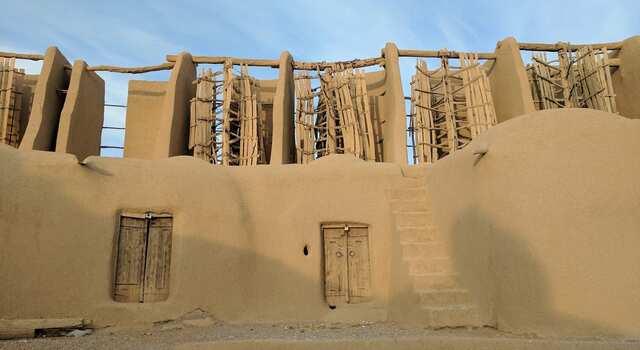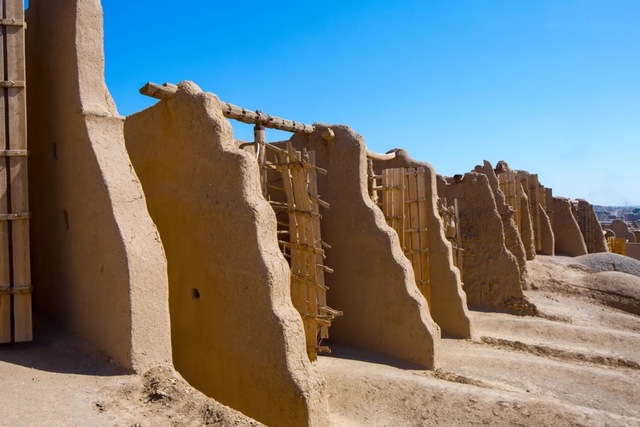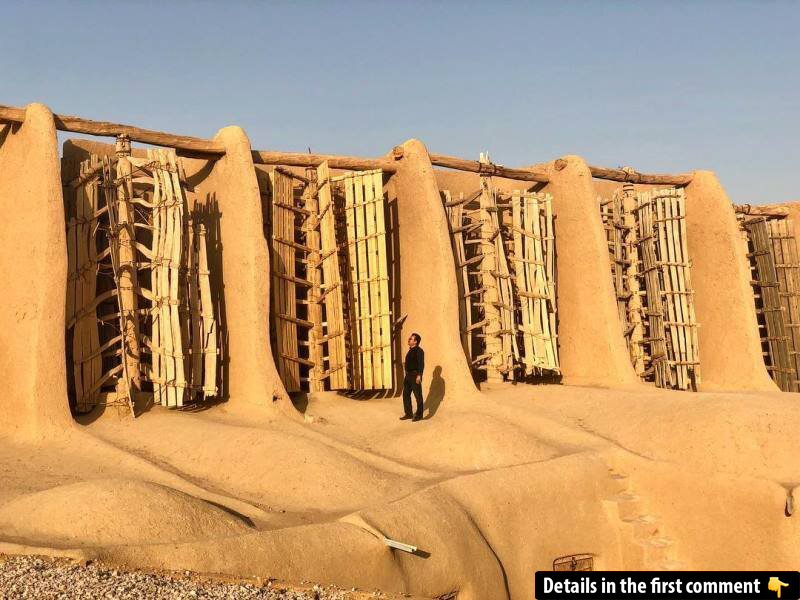The Neshtifan Windmills, situated in the windswept plains of northeastern Iran, are among the most remarkable engineering marvels still functioning today. These ancient windmills, dating back over 1,000 years, stand as a testament to the ingenuity of Persian engineers and their ability to harness the power of nature. Despite the passage of time and the changing landscapes, these windmills continue to serve their original purpose—grinding grain—showing us just how advanced early technology could be. This article explores the fascinating history of the Neshtifan Windmills, the ingenuity behind their design, and their ongoing role in modern-day Iran.
Introduction: A Windmill Legacy in Iran
The Neshtifan Windmills, located in the northeastern region of Iran, are not only among the oldest windmills in the world but are also a symbol of the region’s rich historical and cultural heritage. Known locally as Asbads, these windmills have been in continuous operation for more than a millennium. The town of Neshtifan, originally called Nish Toofan or “storm’s sting,” provides the perfect setting for these unique structures, as the area is subjected to powerful winds known as the Shamal. For centuries, these winds have been harnessed to grind grain, a practice that continues today.
The Neshtifan Windmills are located in the heart of Iran’s arid northeastern region, where natural resources such as water are scarce. The ingenuity of the ancient Persians in utilizing the strong and consistent winds of the region to grind grain and provide power is a remarkable example of how humans have adapted to and shaped their environment over the centuries.

Video
Tune into this video to explore the ancient windmills built over 1,000 years ago, showcasing early engineering marvels.
The Engineering Marvel of the Neshtifan Windmills
What makes the Neshtifan Windmills stand out as a true engineering marvel is their unique design and construction. Built from clay, straw, and wood, these windmills have been carefully constructed to withstand extreme conditions, including winds reaching speeds of up to 74 miles per hour. Their vertical-axis design is particularly suited to the harsh, relentless winds of the region.
The windmills are strategically placed on high elevations to maximize their exposure to the powerful winds, ensuring they remain functional even during periods when winds might be calm in other parts of the country. The millstones, housed in a room below the windmills, are turned by the wind’s energy, grinding the grain into flour. This simple yet effective system showcases the brilliance of ancient Persian engineering, where natural elements were transformed into resources for daily life.

The Impact of the “120 Days Winds” on the Region
The Shamal winds, also known as the “120 days winds” or “black winds,” are a key feature of the region’s climate. These winds blow relentlessly for up to 120 days each year, typically starting in late spring and continuing into the fall. The strong, dry winds have become a part of the landscape and have significantly influenced the lives of the people living in the area.
For the people of Neshtifan, these winds became an asset rather than an obstacle. The local population used the winds to power the windmills, which were essential for grinding grain and other agricultural processes. The winds’ consistency and strength meant that the windmills could continue operating year-round, providing an almost unlimited and free source of energy for local communities. The ingenuity of the design ensured that these windmills were more than just functional; they became an integral part of life in the region.
A Peek into the Ancient Past: The Evolution of the Asbad
The history of windmill development in Iran can be traced back to around 500-900 A.D., when the region’s ancient architects first began experimenting with wind-powered technology. The concept of windmills in Persia is believed to have originated from the need to harness the wind’s power for practical uses such as grinding grain, a task that was crucial for the survival of communities in this arid region.
The early references to windmills can be found in historical texts from the 7th and 9th centuries, pointing to a long-standing tradition of using wind as a renewable energy source. The Neshtifan Windmills represent one of the earliest and most enduring examples of this technology, and their design has remained largely unchanged for over a thousand years. While modern windmills have evolved with the advancement of technology, the Neshtifan windmills remain a testament to the resourcefulness and innovation of ancient Persian engineers.
The Neshtifan Windmills as a National Heritage Site
In recognition of their historical and cultural significance, the Neshtifan Windmills were designated a national heritage site by Iran’s Cultural Heritage Department in 2002. This designation was an important step in ensuring the preservation of these ancient structures for future generations. Today, the windmills are a valuable tourist attraction and an integral part of the country’s cultural landscape.
However, despite their official status as a heritage site, the future of the Neshtifan Windmills remains uncertain. Like many ancient structures, the windmills face the threat of deterioration due to exposure to the elements and the lack of ongoing maintenance. Without proper care and preservation, these ancient marvels could eventually fall into disrepair, losing their historical and cultural value.
Ali Mohammad Etebari: The Custodian of the Windmills
One of the key figures in preserving the Neshtifan Windmills is Ali Mohammad Etebari, the long-time custodian of the windmills. Etebari, who has been caring for the windmills for over 30 years, is passionate about preserving this ancient technology and ensuring that future generations can continue to appreciate and learn from it.
Etebari’s efforts to maintain the windmills go beyond basic repairs. He takes great care in monitoring their condition and performs daily inspections to ensure they remain functional. As a self-appointed custodian of this historical treasure, Etebari’s work has been vital in keeping the windmills operational, making him a local hero and a crucial figure in the preservation of Iran’s cultural heritage.

The Future of the Neshtifan Windmills: Challenges and Concerns
Despite the ongoing efforts to preserve the Neshtifan Windmills, there are significant challenges ahead. The younger generation, with less connection to traditional ways of life, may not fully appreciate the importance of preserving these ancient structures. Changing beliefs and tastes, combined with a lack of interest in traditional methods, could lead to neglect and eventual destruction.
To ensure the survival of these windmills, continued efforts are needed to raise awareness about their cultural and historical significance. The Iranian government, alongside local communities and international organizations, must collaborate to safeguard these windmills for future generations. There is also a potential for these windmills to be recognized as a UNESCO World Heritage site, which could provide the necessary resources and attention for their preservation.
Video
Watch this video by National Geographic to see how 1,000-year-old windmills are still in use today, a testament to ancient innovation.
Conclusion: The Enduring Power of the Neshtifan Windmills
The Neshtifan Windmills are not just relics of the past; they are symbols of human ingenuity, resilience, and the ability to adapt to the natural world. Built more than 1,000 years ago, these windmills continue to stand as a reminder of the ancient Persians’ mastery over wind and their ability to turn environmental challenges into opportunities. The Neshtifan Windmills offer us a unique glimpse into the past, showing how early societies harnessed renewable energy for practical purposes, a concept that remains highly relevant today.
As we move forward in an age where sustainable energy is becoming increasingly important, the lessons of the Neshtifan Windmills can inspire us to think more creatively about how we can harness the power of nature to meet our needs. Their enduring presence is a testament to the timeless ingenuity of human beings and a reminder of the importance of preserving our cultural heritage.



